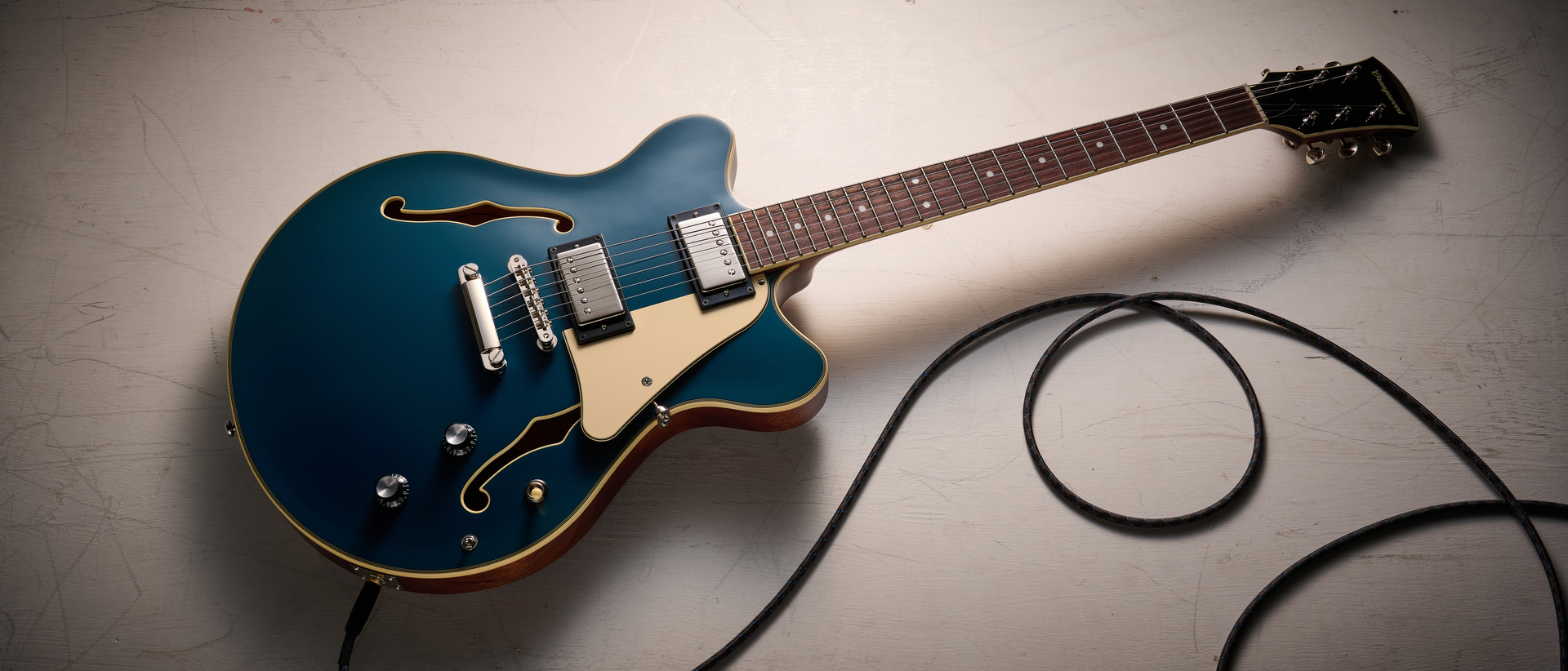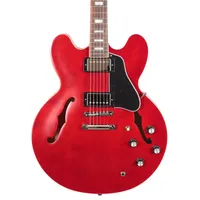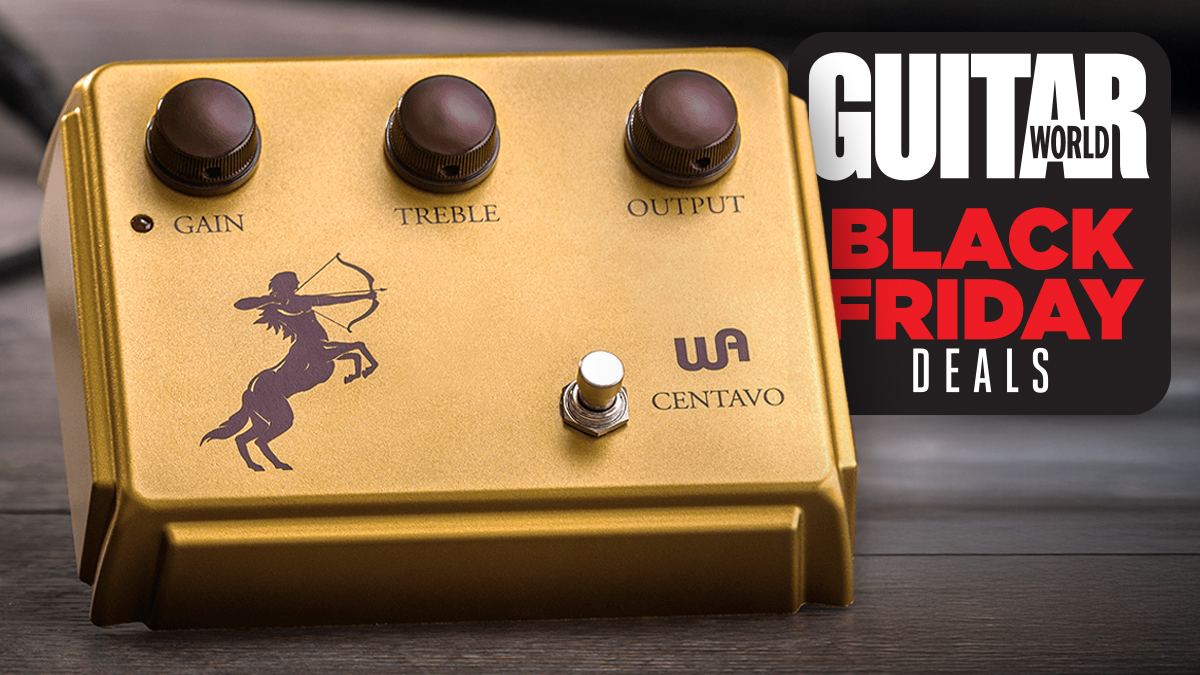Guitar World Verdict
So far, Orangewood's electric guitar journey is proving to be impressive, but with some unexpected twists that suggest a commitment to stand out from the pack. The Clementine feels both fresh and classic in design and feel, with Seth Lover pickups helping it deliver on the sound side. It's not bargain-priced, but it delivers a high-end playing experience.
Pros
- +
Superb build and setup.
- +
Great feel from the satin back and comfort from the belly contour.
- +
Seth Lover pickups contribute to premium sounds here.
- +
Excellent tuning stability.
Cons
- -
The 16-inch radius might be off-putting for some on a semi.
- -
Our test guitar has an issue with the gloss top finish.
- -
It's a bit pricey at full RRP.
You can trust Guitar World
What is it?
Orangewood's first-ever electric guitar release was definitely not playing it safe for a brand coming from the acoustic world; a thinline baritone guitar was a surprise, but as my colleague Matt Mcracken's review confirmed, the Orangewood Del Sol was a very pleasant one. Now the Los Angeles-based company has another surprise for us with its follow-up.
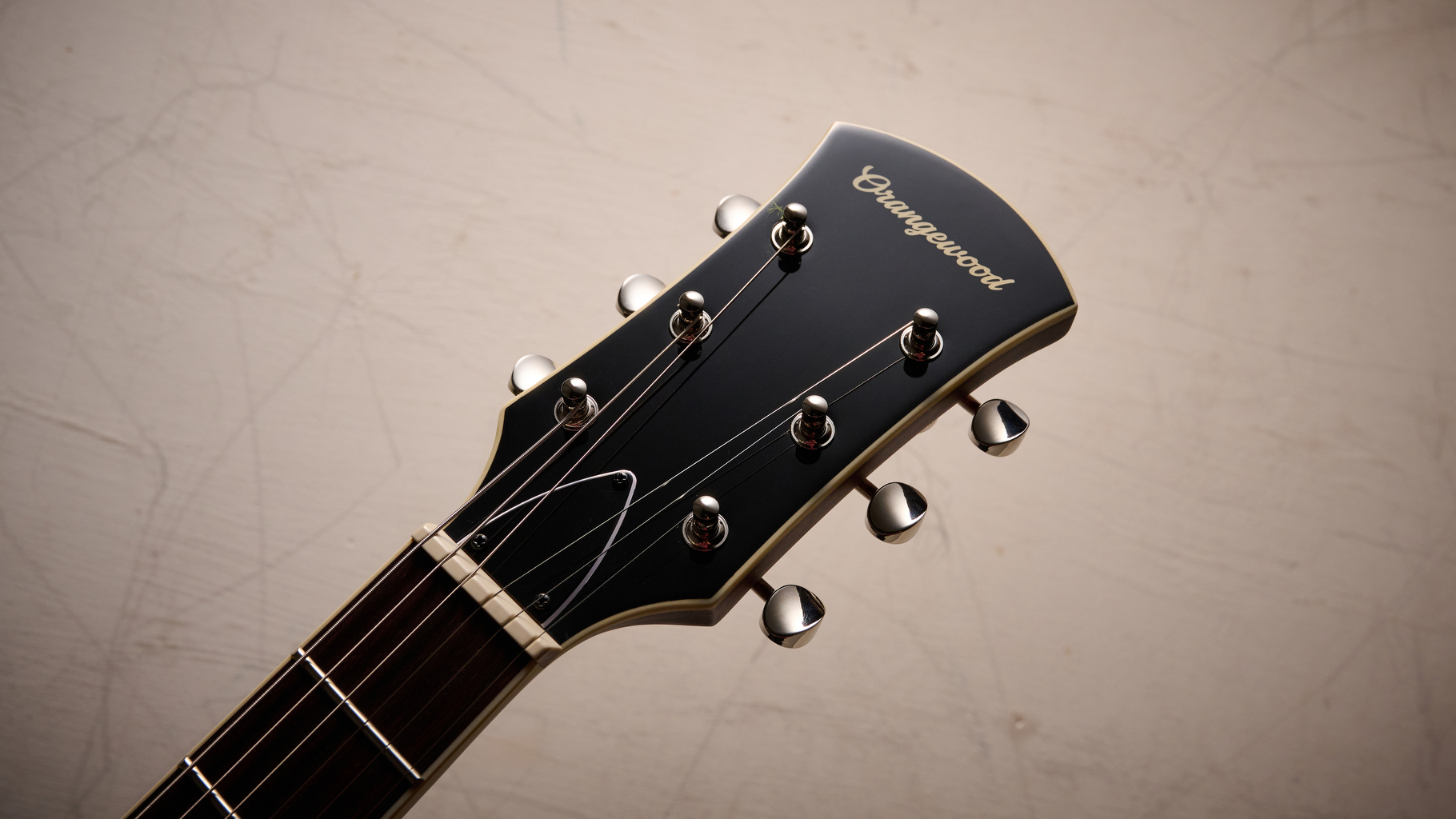
The Clementine is a 24.75"-scale semi-hollow guitar with a price over double that of the Del Sol, but higher specs too. It's also a design that reflects the brand's acoustic guitar roots a little more tangibly.
But while the affordable semi-hollow guitar market has been shaken up over the last decade with developments in manufacturing in the East, the end of the market the Chinese-made Clementine (produced at Cortek's facility in Dalian) sits in is less burgeoning. But it is formidable.
While well under the premium world of Gibson USA, at launch, this model finds itself priced above some of Epiphone's China-made Inspired By Gibson Custom semis and all of PRS SE's Indonesian offerings. Eastman is closer. So what can Orangewood's offering bring to the party and can it bear fruit for players?
Specs
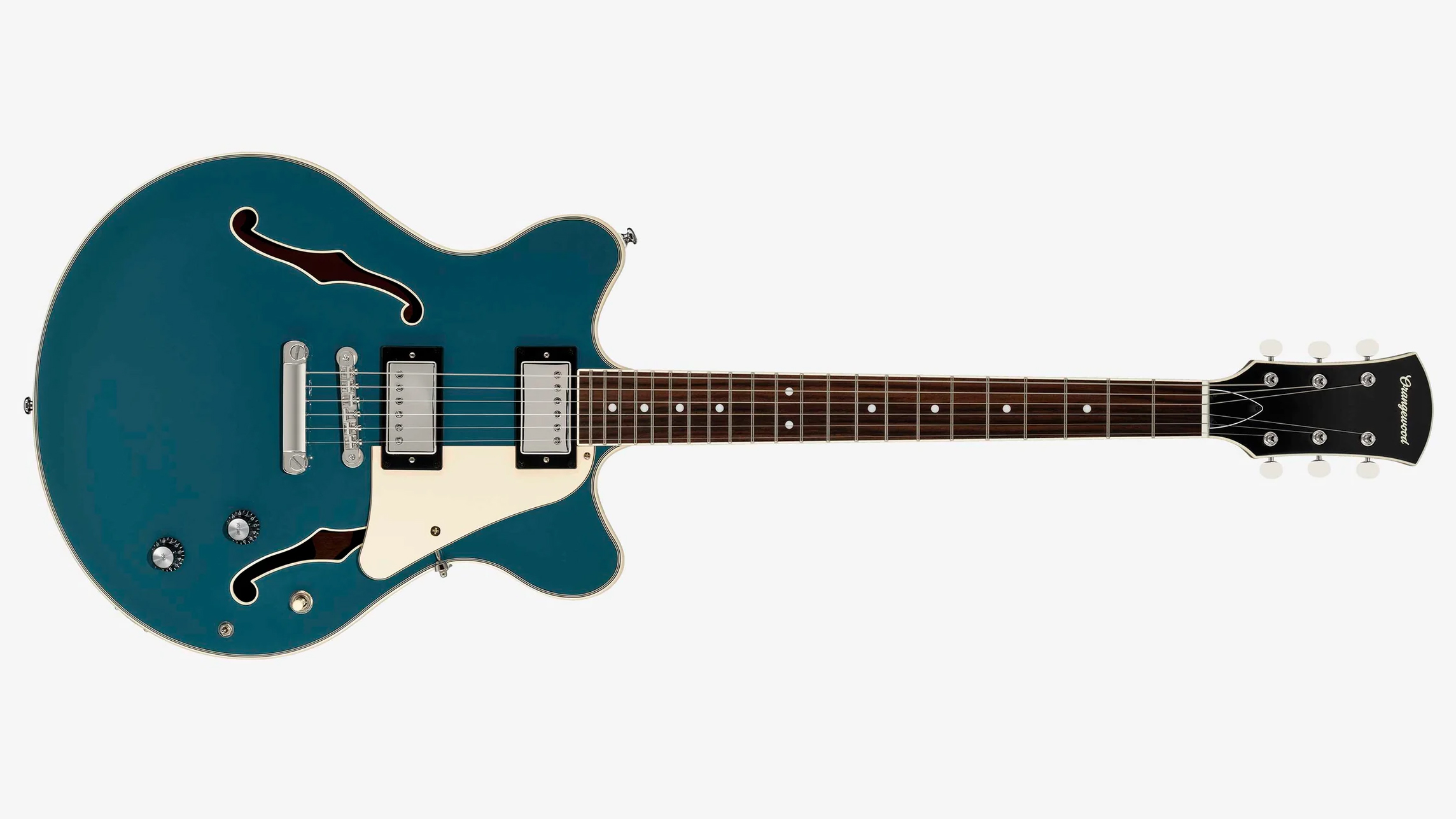
- Launch price: $1,495
- Made: China
- Type: Six-string chambered double-cut electric guitar
- Body: Solid mahogany with solid maple top
- Neck: Mahogany, C-shape
- Fingerboard: Rosewood, 16"
- Scale length: 24.75" / 628mm
- Nut/width: Graph Tech / 43mm
- Frets: 22 frets, medium jumbo
- Hardware: Grover Roto-Grip locking tuners, tune-o-matic bridge
- String spacing at bridge: 51mm
- Electrics: Seymour Duncan Seth Lover humbuckers, 3-way toggle switch, two-way mini toggle switch to activate coil-split
- Weight of test guitar: 7lb/3.17kg
- Left-handed options: No
- Finishes: Americano, Bluebird (as reviewed), Evergreen polyurethane gloss tops
- Cases: Hard case
- Contact: Orangewood
Build quality
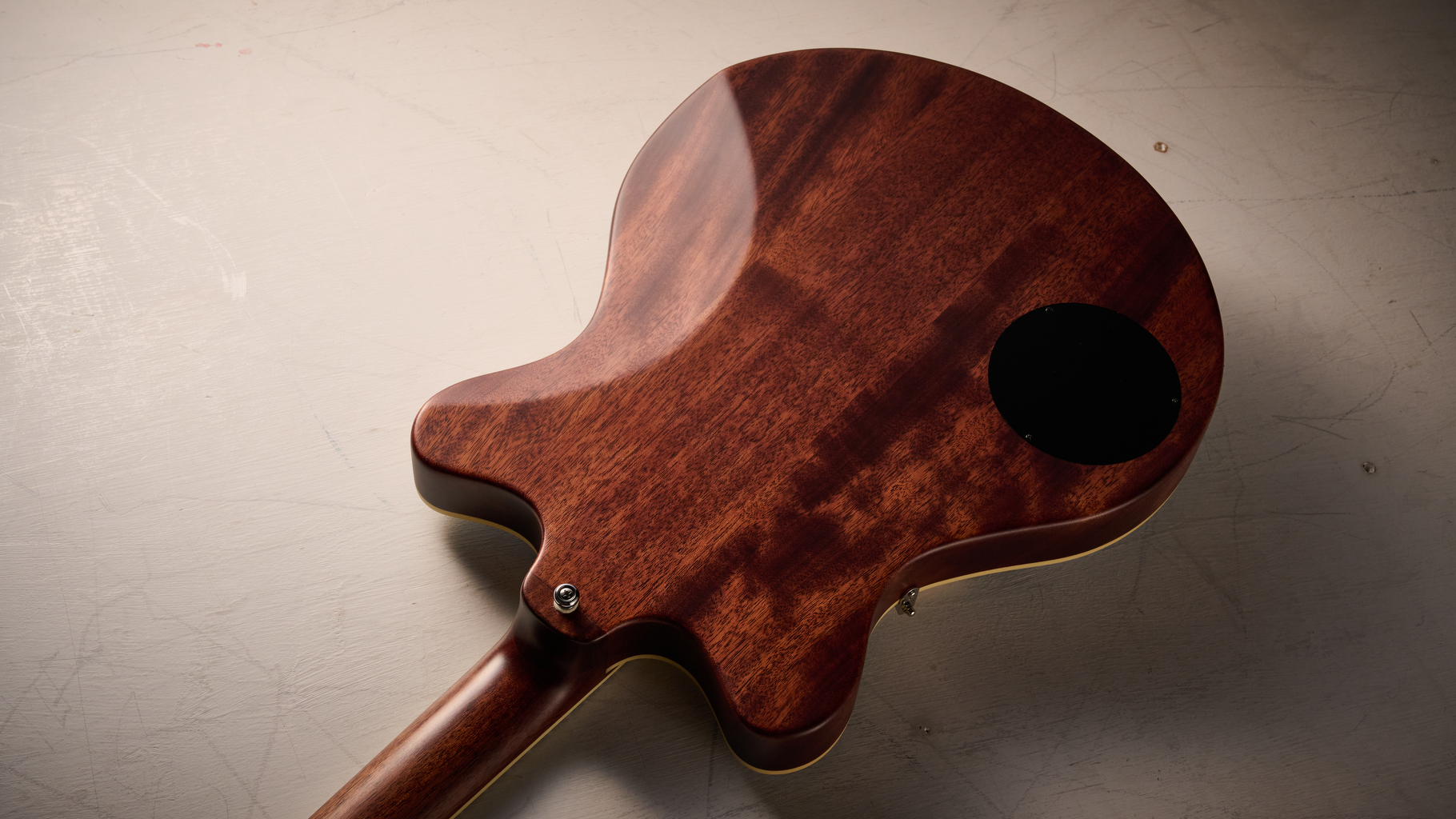
Build quality rating: ★★★★☆
With a smaller double-cut body at just over 15" wide, the Clementine is akin to a Hofner Verythin and certain Jr Gretches like the G655, so there's an immediate potential appeal here for those guitar players put off by the broader physical dimensions of 355s and their kin. But there's much more to be admired here.
I think we have the choice finish for our test guitar with Bluebird here – the other two options are Evergreen and the more traditional dark sunburst hues of Americano. The gloss denim blue of the maple top is a touch darker than the online pics suggest and I'm not complaining, framed in cream binding and pickguard (a black option is also included in the hardcase). The f-holes are bound too, which is good to see.
All the latest guitar news, interviews, lessons, reviews, deals and more, direct to your inbox!
But the rest of the guitar, with the exception of the slim gloss black headstock front, is a smooth satin natural mahogany. It has a really immediate appeal that does indeed echo a contemporary acoustic guitar – for me, it's specifically my own mahogany Sigma dreadnought. It's very appealing and well crafted – and I'd like to see more electric guitars with this design and aesthetic approach.
Further surprises for a semi await at the back with a belly carve and a control cavity cover for the wiring – a rare treat for the notoriously difficult to work on designs of most semi-hollow guitars. This test Clementine is also pleasingly light at 7lbs.
The construction here is classed as a 'chambered' body with the carved mahogany and a maple cap. The mahogany neck features a scarf joint to the headstock to enable it to be angled.
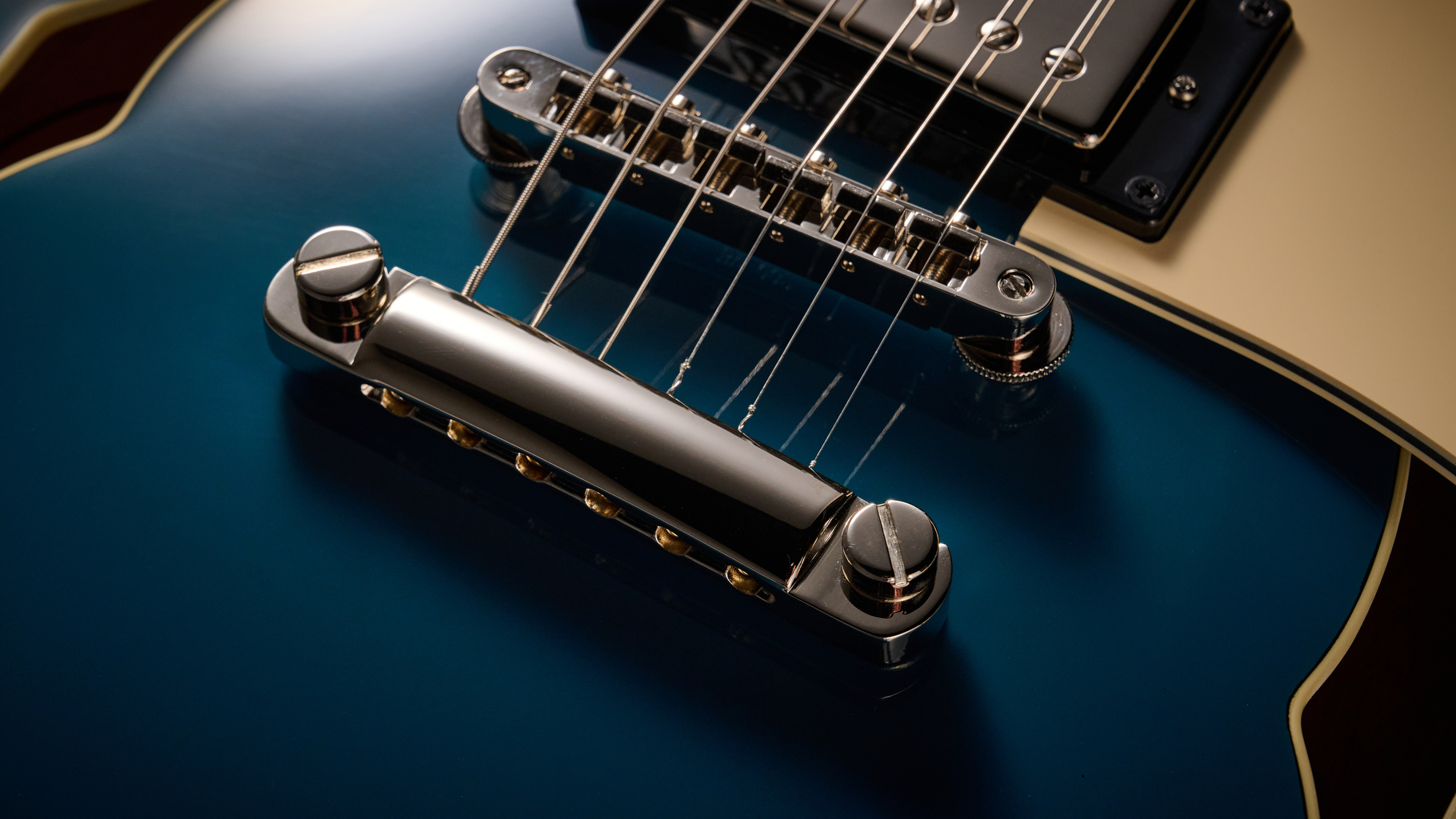
Binding and joins – all immaculate here, but under the light and close up, I notice an effect across the top Bluebird finish that looks like tiny indentations – too small to feel and hard to photograph too. It doesn't look to be maple texture under a thin finish but the polyurethane finish itself. It's really only clearly visible straight under bright light at angles when you're looking close and while not something other people might notice under most conditions, it's still a bit of a shame because the Clementine gets it so right elsewhere.
I would expect a truss rod tweak to have been needed post-transit but no, it's all good out of the box. And this is one of the very best set-up guitars I can recall in recent review memory. The frets are well polished and my rocker reveals they're level across the 'board. Which is just as well because the action is super low 1.3mm from low E and 0.75mm from the high E on the 16" radius rosewood fretboard – yes, 16 inches, more on that soon.
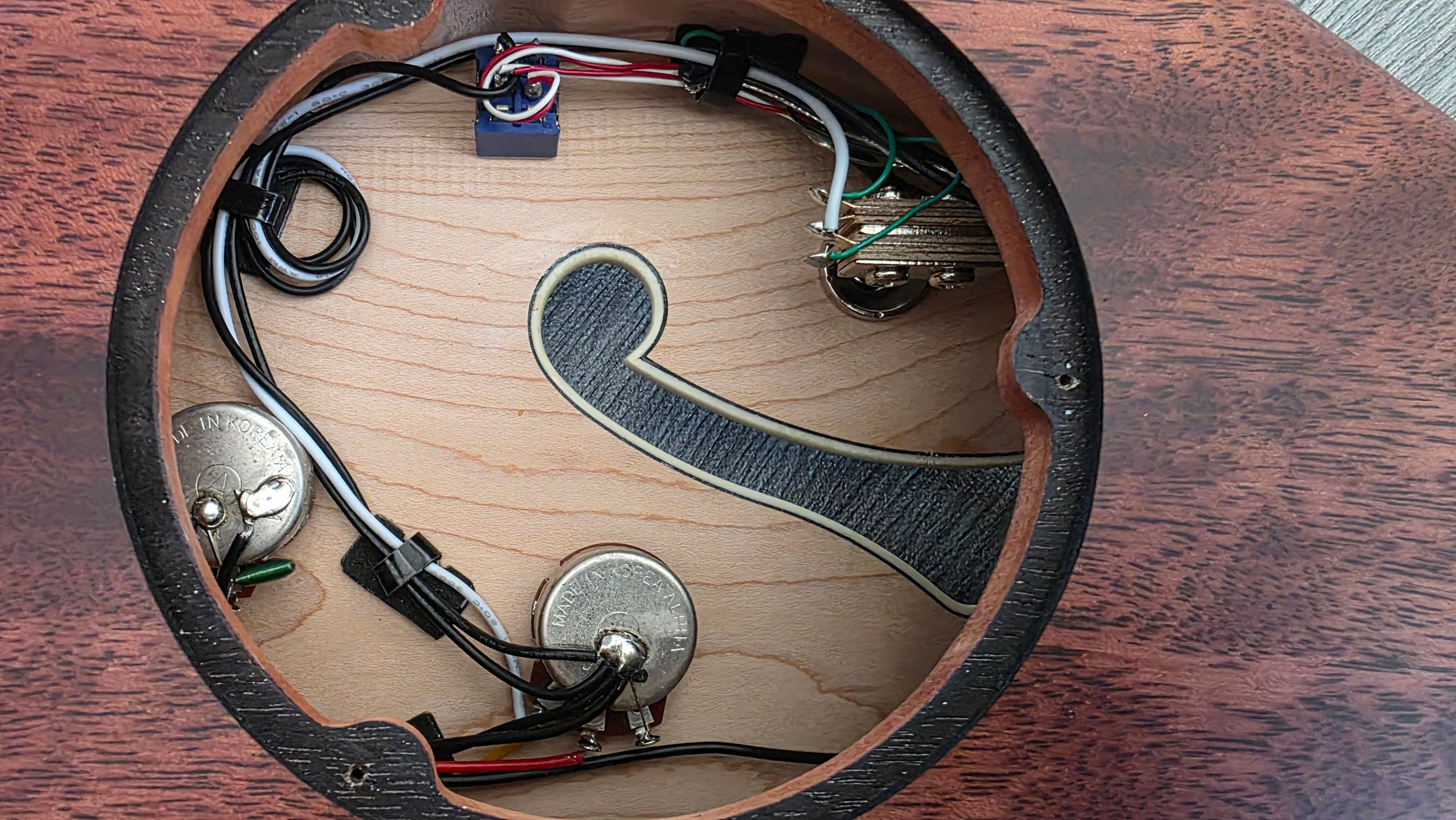
The key higher spec notables here are the Grover Roto-Grip locking tuners and Seymour Duncan Seth Lover humbuckers, the latter a tried and true design favoured by guitarists including Joe Perry, based closely on the PAF design of the pickup pioneer they're named after.
Though there is no Gibson-esque double tone and volume control setup here, there is a mini switch for coil splits. Something I find far more practical to engage while playing than an admittedly stealthier push-pull on the volume pot.
Playability
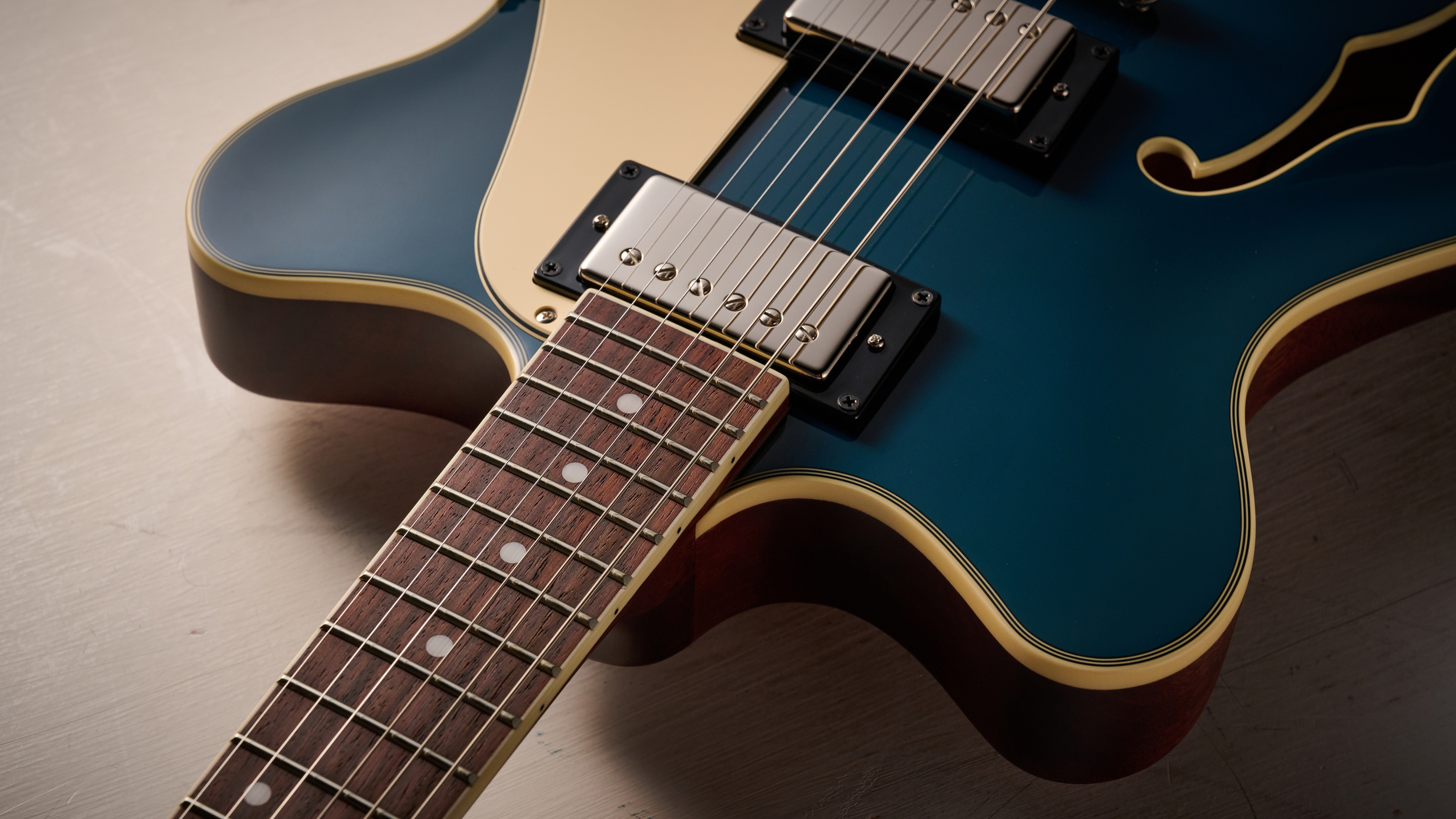
Playability rating: ★★★★½
This was our first original electric guitar design, so throughout product development we were really intentional about reflecting our acoustic background
Gerald Ignacio, Product Lead, Orangewood
Now things really take an unexpected turn, because Orangewood has gone for a 16" fretboard radius here, something rarely seen outside so-called shred guitars and D'Angelicos. It's a far cry from the 12" many might expect for a semi-hollow type guitar.
"Our acoustic guitars have a similar 16-inch fretboard radius, so we deliberately carried that spec over to the Clementine," explains Orangewood's Product Lead Gerald Ignacio, when I ask the company about the decision.
"This was our first original electric guitar design, so throughout product development we were really intentional about reflecting our acoustic background," adds Ignacio. "The chambered body with a solid carved top is the biggest and probably most obvious nod to our acoustic roots, but we also included subtler touches, like the satin back, neck, and sides that mirror some of our most popular acoustic guitar collections.
"It was important to us that these guitars felt comfortable and familiar to our longtime players, while also exploring something new."
As an approach it shows Orangewood is making an effort to distinguish itself in the electric market. Indeed, moving from my own 00 acoustic workhorse Auden Julia – with notably low action – to this guitar feels like a smooth transition. And yet, the action is so low and the string tension so friendly under my fingers here, that it doesn't feel as jarring as I would expect moving from my SG and even Mustangs. If anything, I'm learning to question my old dyed-in-the-wool preferences – does John Mayer have a point about radius not making much of a difference?
That may depend on context but it clearly does matter in a world where everyone has different-sized hands. So 16" will feel quite a leap for some players and it could be a dealbreaker on paper for others, but I will say the playability of a neck is clearly more than radius. The Orangewood Clementine is a testament to that.
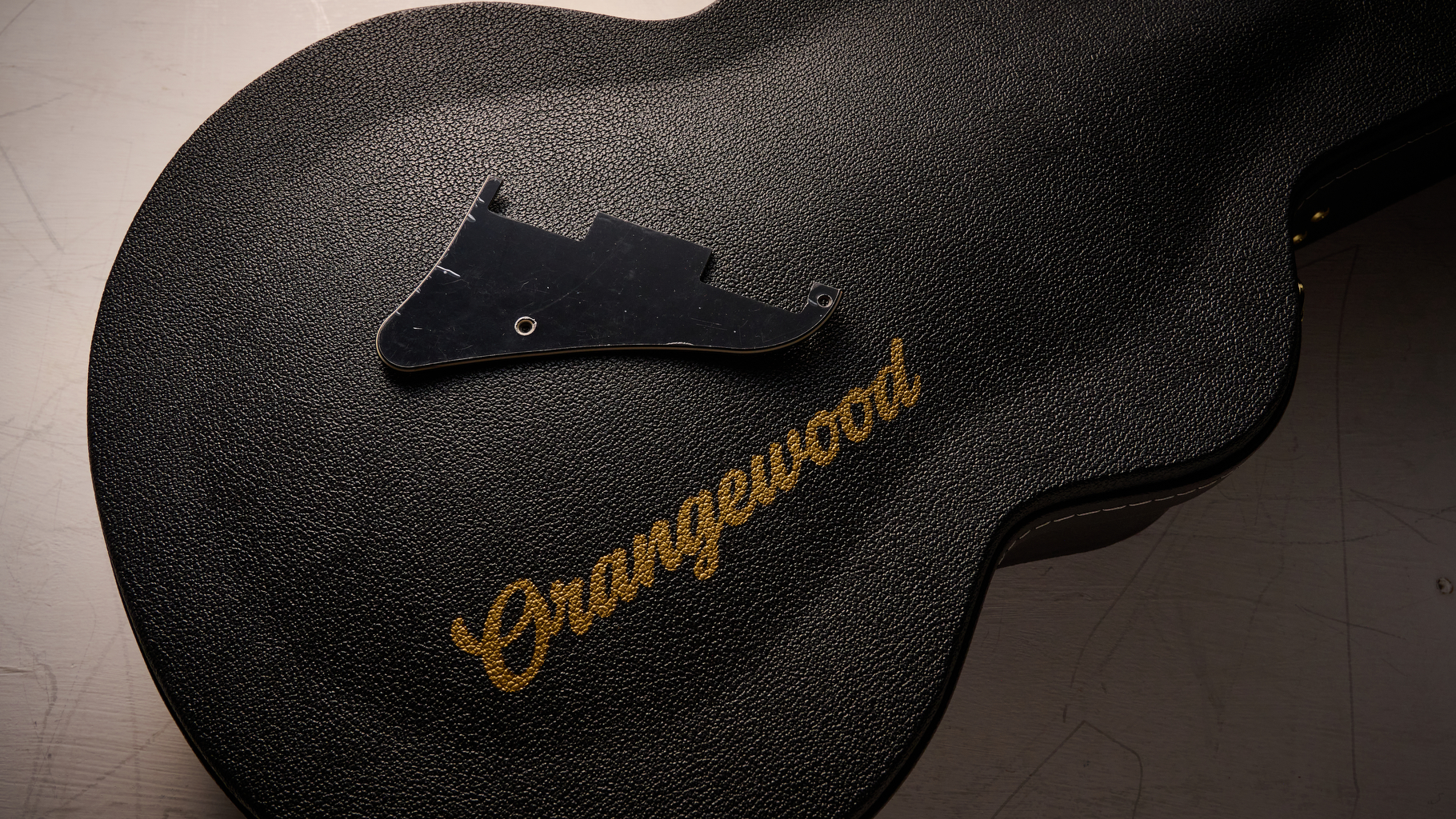
The belly contour on the back of the guitar should not be overlooked as part of the positive playing experience – I honestly found it to be a bit of a revelation with a guitar of this style
During my sessions with the Clementine, the low action and modern C-shape here did not leave me suffering from finger fatigue. I found my lead playing is cleaner with this flatter 'board, but the rolled bound edges, 23.5mm neck depth (measured at the 12th fret) and medium jumbo frets don't make me work too hard either. And not in the way my relatively baseball bat neck-toting SG Special sometimes can. I think some players who wouldn't usually consider this radius will be pleasantly surprised by the Clementine.
The belly contour on the back of the guitar should not be overlooked as part of the positive playing experience – I honestly found it to be a bit of a revelation with a guitar of this style. I've struggled with semi-hollow styles in the past because of their size, but the contour really does complement the smaller semi body here and brings the guitar closer to me, not just when seated but standing too. I feel closer to what I'm playing, more connected in a way I've never really felt with other semi-hollow guitars.
Sounds
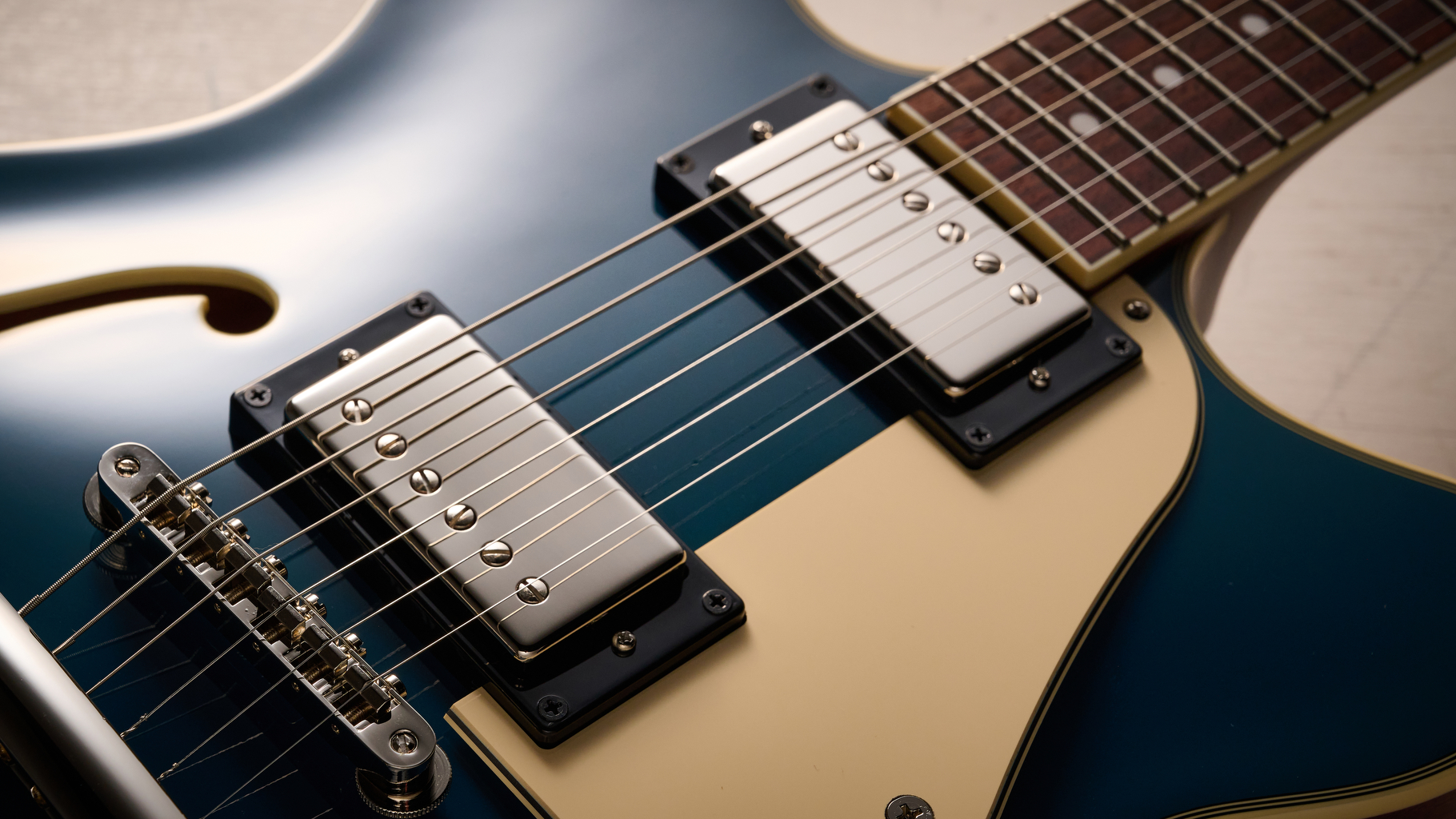
Sounds rating: ★★★★½
Let's get the boring bit out of the way; I have found that coil splits on humbuckers are usually a case of 'nice to have' at best. The drop in volume and low end doesn't make them a go-to in comparison to the full-fat 'bucker experience, but can be a useful thinner, even lower-fi sound to draw on dynamically. I find that to be the case here, you won't be fooling yourself these are a substitute for a Tele, but they are a side dish, not the main meal.
And that main is wholesome. One of the reasons you may not need the coil-split on the bridge Seth Lover humbucker is because it isn't lacking in high-end ring, along with some airiness from the Clementine's body. The Alnico 2 magnets prevent things from getting too sharp, and I find it really responsive for choppier soul rhythm work through a Deluxe Reverb set just below breakup with some attack, but gloriously thick when driven through a Mesa/Boogie MkII capture via a Neural DSP Nano Cortex through my Line 6 Powercab.
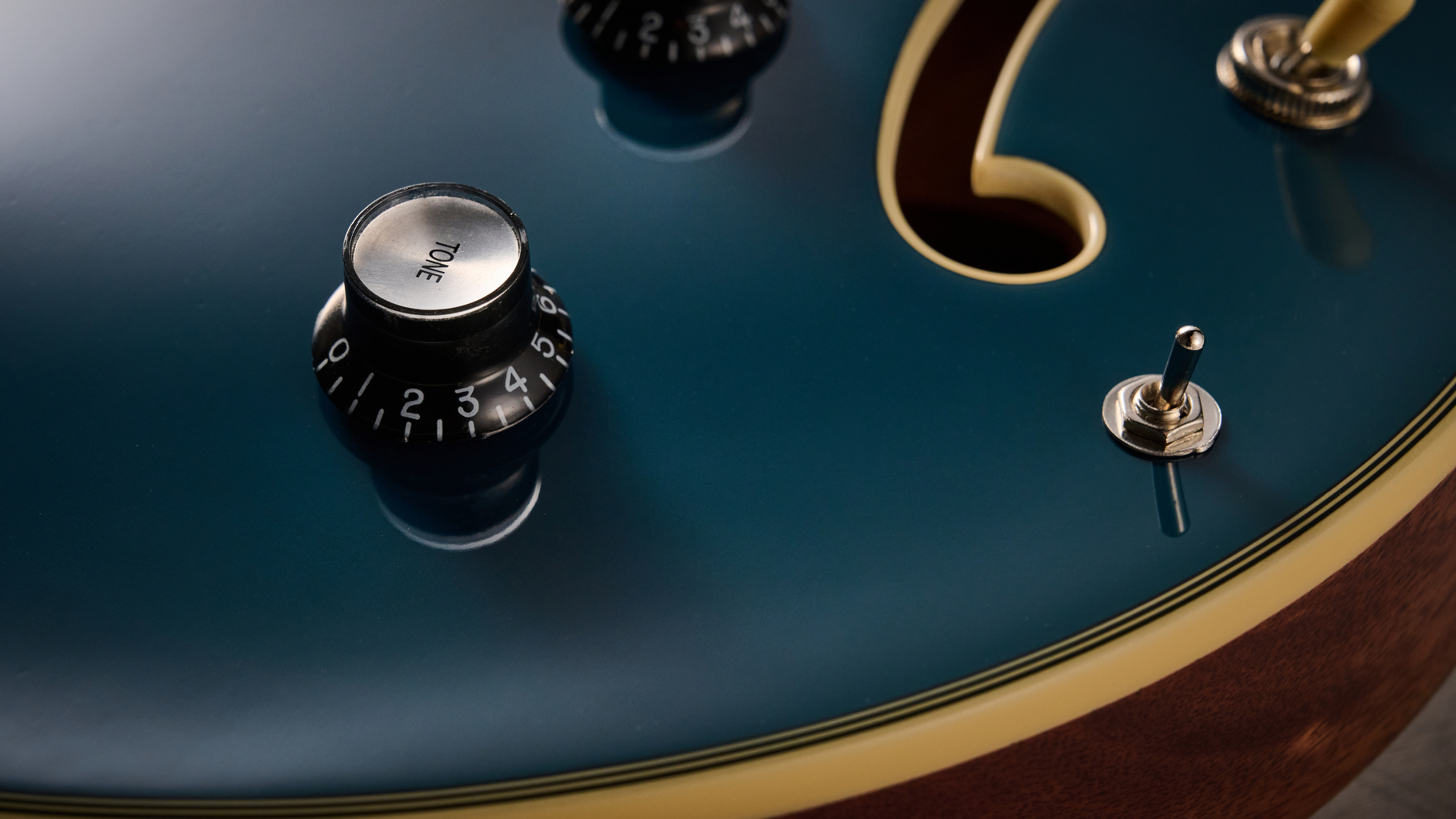
Neck 'buckers really can benefit from the hollow quality that semis can bring to the sound
The neck reveals the PAF territory I expect; smooth, thick low-end when driven with singing sustained mids and percussive highs. Neck 'buckers really can benefit from the hollow quality that semis can bring to the sound, offering a hollow element that's especially attractive for cleaner sounds with a touch of phaser or flanger. The middle position is perfect for '60s rock chordwork, with the balance of air and jangle.
You can cover broad musical territory here with the controls and without touching an overdrive pedal, but what struck me was the sonic definition and playing comfort I found in the higher register with the stock Ernie Ball Slinky 10s, which is hugely rewarding for solos but also high register chords.
Verdict
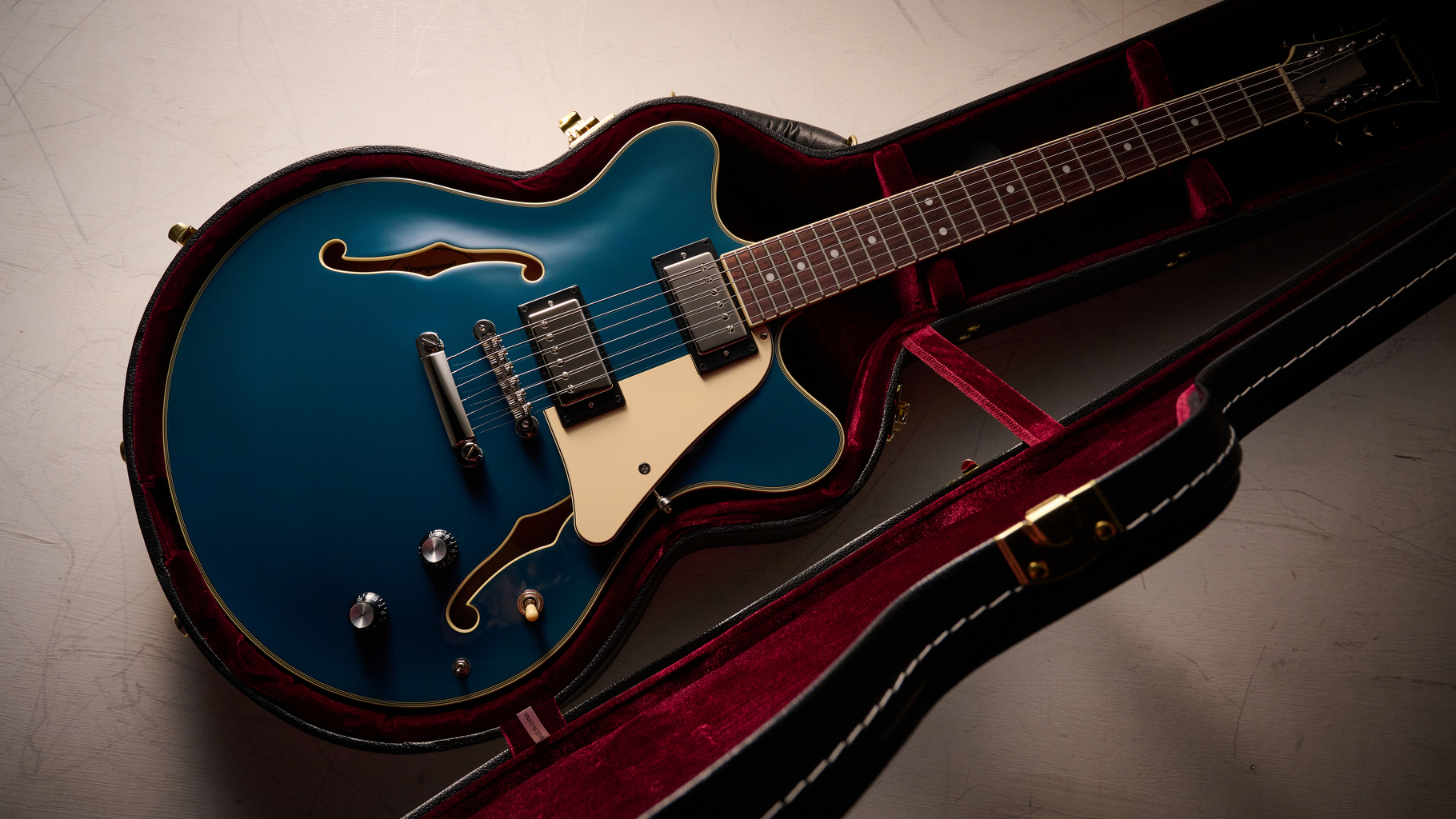
I find the feel and performance of the Clementine to be everything I'd expect at this price point
A nearly-$1,500 Chinese-made guitar from a brand still proving its reputation on the electric side on might seem a bolder sell on paper to some, and yet knowing Orangewood's history of acoustic design, Cor-Tek's skill in delivering its vision and my own experience of playing this guitar, tells a different narrative.
The gloss finish issue on this test guitar aside, I find the feel and performance of the Clementine to be everything I'd expect at this price point, but more so; a guitar I thoroughly enjoy picking up, plugged in and otherwise. A guitar to win over the semi-hollow shy like me? I think so!
It's lightweight, comfortable with the satin mahogany and gloss combo offering a distinct and highly persuasive aesthetic and playing experience. Now, Orangewood's challenge, as a US company currently selling mostly direct online, will be getting this guitar in players' hands to hopefully discover what I have.
Guitar World verdict: So far, Orangewood's electric guitar journey is proving to be impressive, but with some unexpected twists that suggest a commitment to stand out from the pack. The Clementine feels both fresh and classic in design and feel, with Seth Lover pickups helping it deliver on the sound side. It's not bargain-priced, but it delivers a high-end playing experience.
Test | Results | Score | Header Cell - Column 3 |
|---|---|---|---|
Build quality | That gloss / satin natural combo is very appealing and the only downside is some tiny indentations in the gloss side visible close up. | ★★★★☆ | Row 0 - Cell 3 |
Playability | The 16-inch radius is certainly not of universal appeal but you may be surprised just how comfortable it proves here. | ★★★★½ | Row 1 - Cell 3 |
Sounds | The tried and true Seymour Duncan Seth Lovers deliver again, but the coil-splits feel less essential. | ★★★★½ | Row 2 - Cell 3 |
Overall | It's coming in at a slightly higher price than I'd expect for a Cort-Tek build, but the Clementine really does impress. | ★★★★½ | Row 3 - Cell 3 |
Also try
Epiphone Inspired By Gibson Custom 1962 ES-335 Reissue - $1,149 |€1,299 | £1,099
It's hard to find direct comparisons with the Clementine in terms of a semi double-cut guitar with 16" radius fretboard, humbuckers and single tone and volume controls so we'll start instead with the semi cornerstone. A bigger, laminate body (solid maple/poplar) and 12" radius but the Custombucker Alnico 3 pickups offer comparible versatility to the Seth Lovers.
Read more: Epiphone Inspired By Gibson Custom 1962 ES-335 Reissue review

D'Angelico Excel DC - $1,899.99
Over a half inch wider than the Clementine at 16" (there's also the 14" wide DC Mini available), the 16" radius and Seymour Duncan humbuckers (here a '59 in the neck and SH-4 bridge) certainly feel like one of the closer comparisons you'll find on that side of the spec.
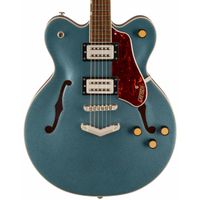
Gretsch Streamliner G2622 Centre Block Double-Cut - $529.99 | £479
If you'd like a smaller semi but you're on a tighter budget, the Streamliner Gretsch range has you covered. The 16-inch wide body is a touch broader than the Clementine here, but has a coil split for its Broad'Tron BT-3S humbuckers.
Hands-on videos
Orangewood
John Nathan Cordy

Phillip McKnight

Rob has 20 years of experience writing, reviewing, interviewing and editing for guitar magazines and websites, including Guitarist and Total Guitar.
Over the years he's interviewed artists including Metallica, Black Sabbath, Pearl Jam and Soundgarden, but he's lost count of all the guitar gear he's tested.
He's now Reviews Editor for GuitarWorld.com, Guitar World magazine and MusicRadar guitars, heading up our in-house reviews team to give you in-depth and honest tests of the latest guitar gear. He eats and dreams reviews.
You must confirm your public display name before commenting
Please logout and then login again, you will then be prompted to enter your display name.
